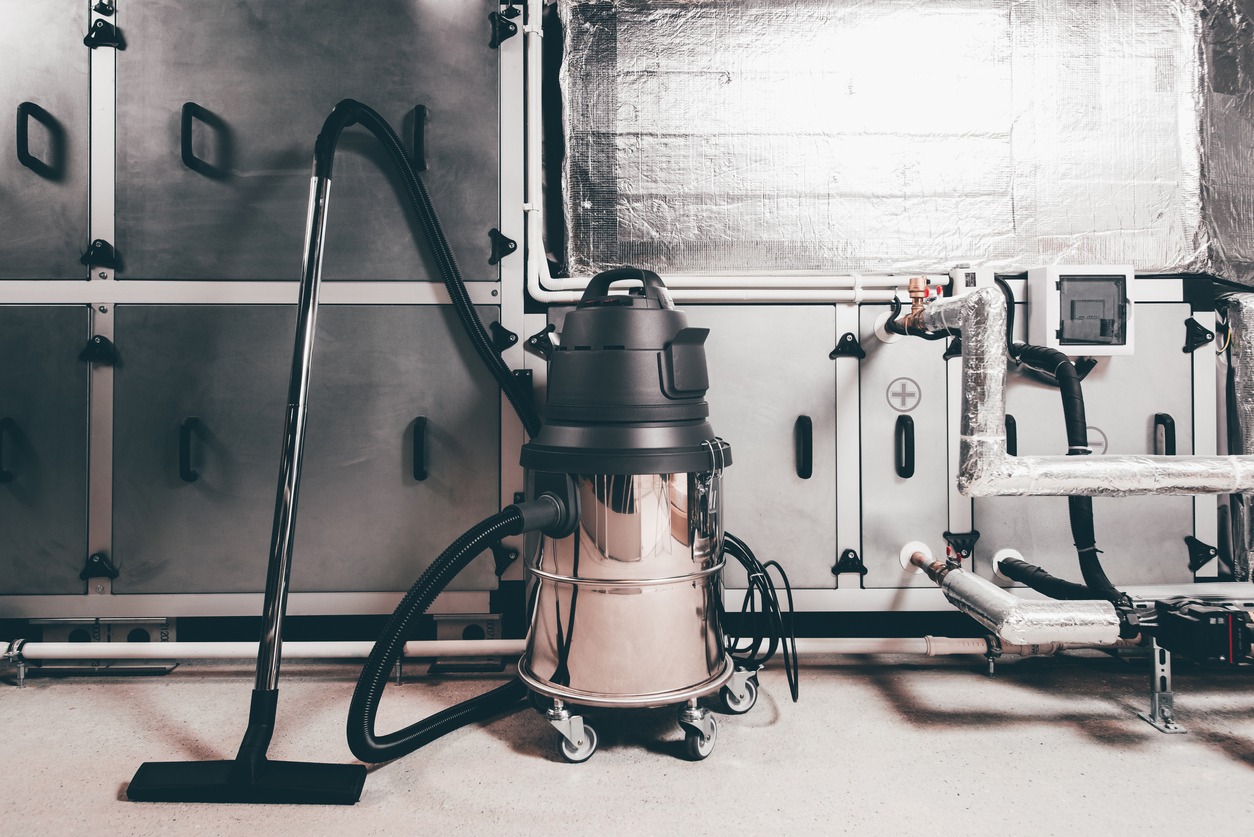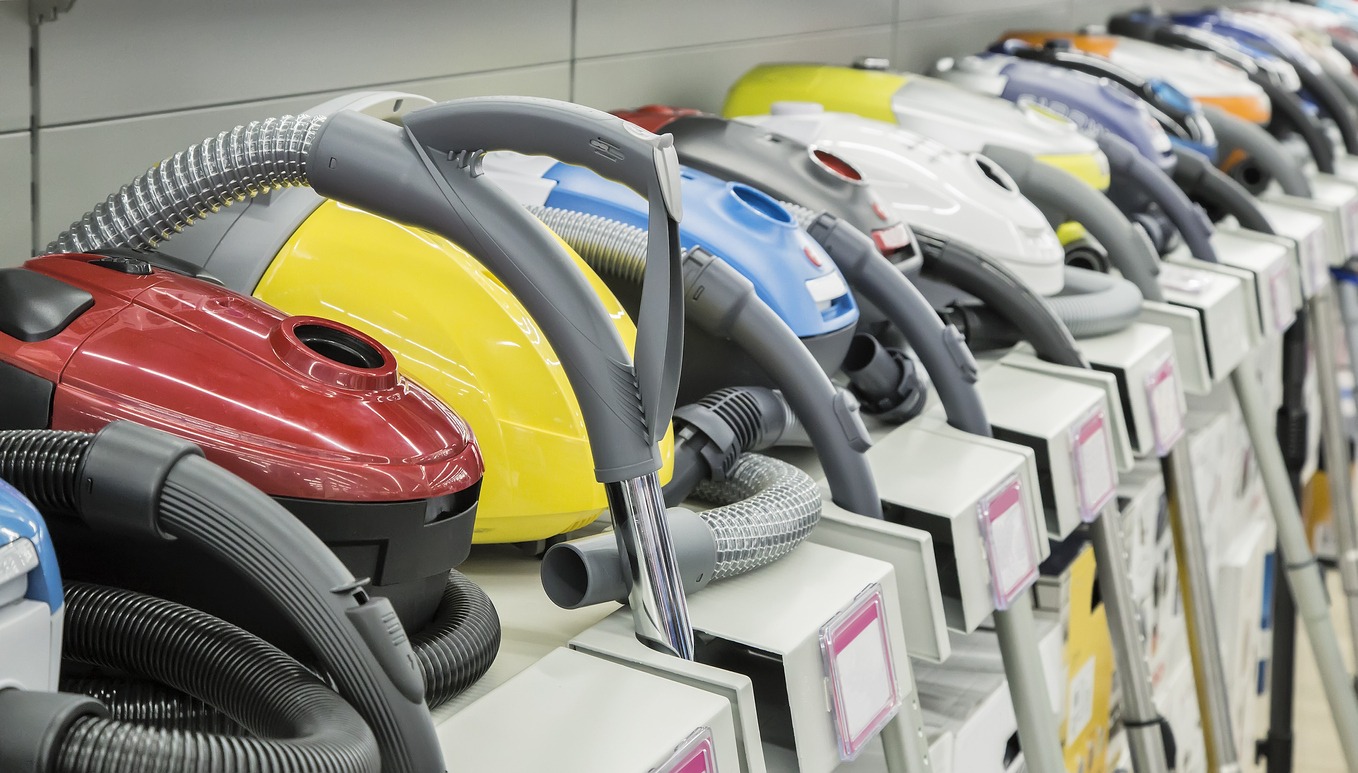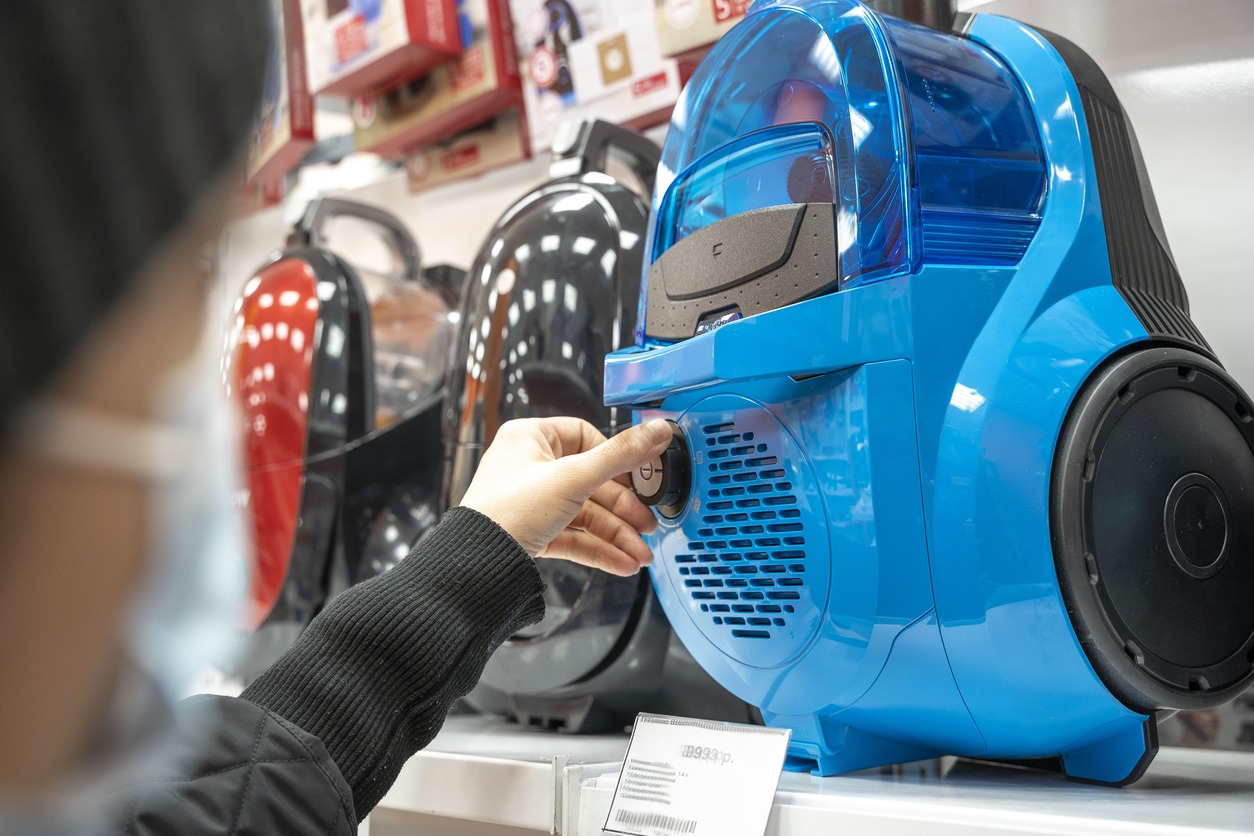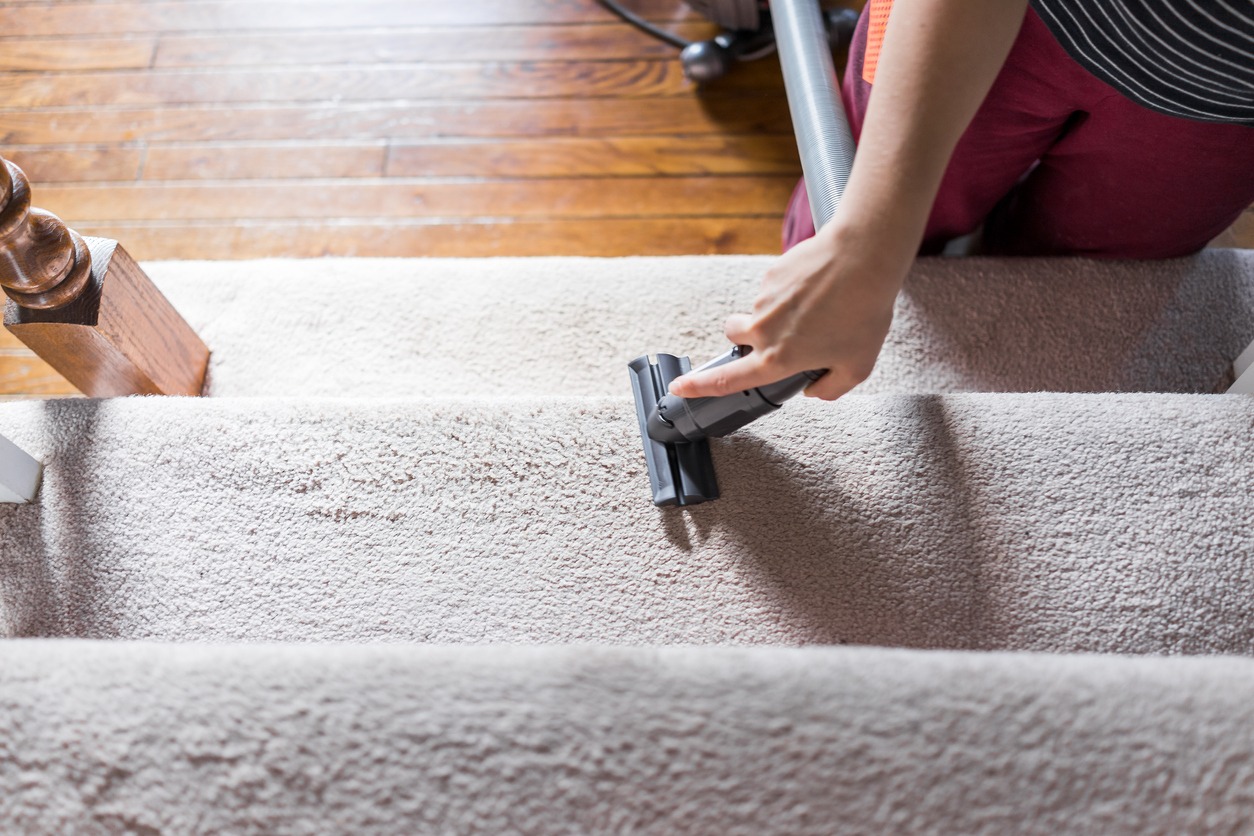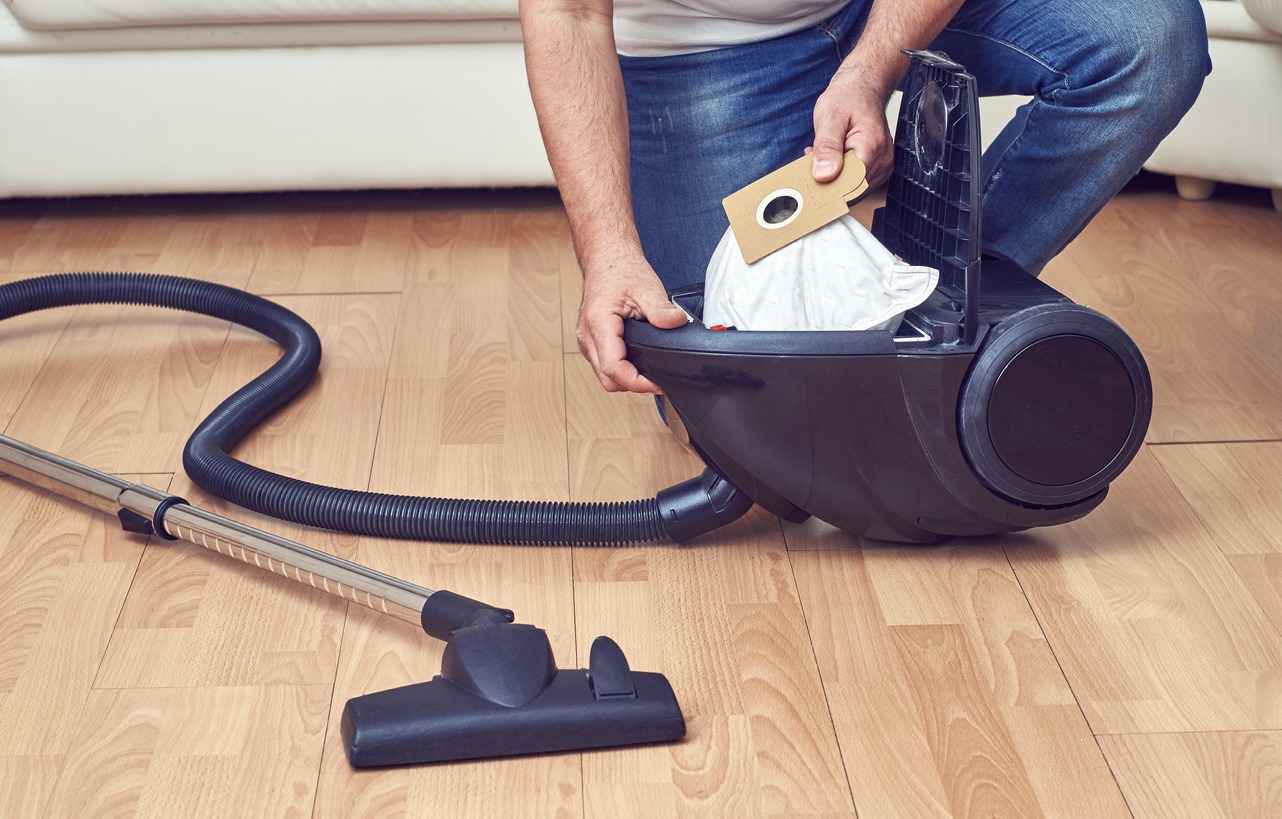Introduction
Your workshop projects might be satisfying and fulfilling, but most of them do result in an annoying mess. While it’s a productive use of your time, these projects cause both wet and dry spills—oil and sawdust, for example. It can get tiring to keep sweeping or mopping those workshop floors after each work session, but it’s also equally important to have a safe, clean workspace.
If machining, welding, and woodworking projects are a major part of your life, it might be time to invest in an efficient, wet/dry vacuum cleaner. In order to tackle all kinds of spills and debris, a reliable model is essential for keeping up a presentable and safe workspace.
What is a Wet/Dry Vacuum Cleaner?
A wet/dry vacuum cleaner is an excellent alternative to the traditional mop and broom. The design usually includes a rotating brush made from synthetic materials such as microfiber or nylon. This brush is designed to pick up the dirt and debris left on your workspace floor. It can then switch over to a mopping and scrubbing mode to ensure a clean, dry surface.
Modern wet/dry vacuum options are quite versatile since they come with several cleaning attachments. Some of these accessories might be perfect for your current workshop cleaning needs, while others may be unnecessary. Still, it does make sense to look for a wet/dry vacuum that can help you with that cleanup after a messy project (or just for general upkeep). When you finally get the right attachments, it should be easy to clean up every single corner and area of your workspace.
How Do Wet/Dry Vacuums Work?
Wet vacuums work to quickly siphon up liquids; they are especially useful in cases of flooding or major leakages. Dry vacuums, on the other hand, are useful for sucking up dry dirt and dust from carpets, hard floors, etc. Both of these have different uses and different systems, but a wet/dry vacuum has a very unique setup.
Some wet/dry vacuum cleaners make use of a two-chamber design. This separates the liquids and solids into two separate buckets. The debris, once sucked in, goes along a tube. When it goes over a bucket, the airflow changes accordingly. This way, the dirt and liquid fall into their respective buckets. Other models usually have a dirt bin that collects everything that the vacuum sucks up. The liquids, dirt, and debris all go inside this bin, which will require frequent cleaning.
There are also many wet/dry vacuum cleaners with a blow function. While this may not apply for workshop use, it can come in handy if you want to move large debris such as leaves into a pile before turning on the vacuum function.
Advantages and Disadvantages of Having a Wet/Dry Vacuum in Your Workshop
A wet/dry or wet and dry vacuum can come in handy for a number of tasks, especially if you have an often-used workshop to clean up. However, not everything is always the perfect choice for every individual. Before buying a wet/dry vacuum, we need to be aware of its general advantages and disadvantages. Let’s start by taking a look at the major upsides of having a wet/dry vacuum:
Advantages of Having a Wet/Dry Vacuum
1. A Versatile Option
A wet/dry vacuum cleaner is suitable for many types of cleaning projects. You don’t have to reserve it for just cleaning the floor. The variety of cleaning attachments means that the vacuum can pick up large debris from hard flooring to small dust particles from upholstery.
If your wet/dry vacuum cleaner has a blow function, you may also try using it to inflate large pool toys, blow away snow from the driveway, unclog pipes, and even get small objects out of a sink. Overall, this machine has the potential of becoming an indispensable tool in your workshop.
2. A Powerful Machine
Wet/dry vacuums are usually designed to have a very powerful suction and lifting feature. This makes it very efficient for removing almost all the spills and dirt in a workspace. Simply put, you probably won’t have to go over the place again with a mop or broom to clear up any noticeable residue after using a decent wet/dry vacuum.
3. Saves a lot of Time
One of the most common reasons for using any kind of vacuum is to save time. With the powerful suction and efficient performance of most wet/dry vacuum models, you can rely on a quick cleaning experience. With just a tap of the handle, you or anyone else could clear up a workspace in a fraction of the time it would otherwise take with a traditional brush and mop.
4. Saves You from A lot of Hassle
Saving time goes hand in hand with saving energy and hassle. When your wet/dry vacuum is working properly, you can clear things up and come back to a clean, clutter-free workspace next time. This will hopefully motivate you further and keep you working at the current project without stressing out about cleaning the mess.
5. Size Options
Wet/dry vacuums come in a wide variety of sizes. Some can be as small as a half-gallon capacity, while the larger models may run up to a 15-gallon capacity. The larger a tank is, the heavier it will be once it fills up. There are also several motor capacities to choose from, so you can get a more heavy-duty model if your workspace calls for it. Most large wet/dry vacuum models also have inbuilt wheels, making it easier to move the vacuum around on a level surface.
6. Possible Health Benefits
When a space is regularly swept and mopped, there are fewer chances of having dust and other harmful small debris floating in the air. While you can make your working environment healthier with dust collectors, the same can also be true of a wet/dry vacuum. A workshop is likely to have a lot of sawdust around, as well as other potentially harmful elements.
Regularly using such a device can help reduce the amount of allergens in the atmosphere. Whether you suffer from respiratory issues or not, having and using a wet/dry vacuum with the right filter can help to make your breathing easier while working.
Disadvantages of Having a Wet/Dry Vacuum
Where there are upsides, we also have to consider the potential downsides. Let’s now have a look at the potential disadvantages of having a wet/dry vacuum cleaner for your workspace:
1. Might be too heavy for some areas
We’ve already mentioned how a wet/dry vacuum can get quite heavy. Even if a vacuum model has wheels, this feature won’t help if you have to lug it up and down the stairs. This could limit your vacuum usage if your workspace is in the basement, attic, or some other area that’s only accessible by walking some steps.
2. Model features will vary
Certain wet/dry vacuums won’t actually clean the carpet, upholstery, or other surfaces. They will only suck up the water or other liquids without giving that mopping finish.
3. May require frequent filter changes
Most wet/dry vacuums require you to change the filter when you’re switching between the wet and dry modes. This can be a hassle, especially if you’re mostly working small jobs and have small messes to clean up.
Types of Wet/Dry Vacuums
There are a few types of wet/dry vacuums that one may consider for their home or workshop. There is no universal best option; it mainly depends on what kind of tasks you need the vacuum for. Take a look at the following variations; these will hopefully help out in shortlisting your choices:
Portable Wet/Dry Vacuums
Portable wet/dry vacuums are usually handheld versions. These are good for cleaning up small messes anywhere in your home, car, office, garage, workshop, etc. You can check out this guide to car cleaning kits for more details on that aspect.
If a portable vacuum cleaner is a cordless one, their battery life and capacity will probably be limited. However, a cordless wet/dry vacuum can be a great fit for someone who wants to siphon up specific liquids, clean small areas, or has limited storage space.
Upright Wet/Dry Vacuums
Upright models are among the most popular vacuum cleaners, so it makes sense to consider one in a wet/dry design too. The structure has a user-friendly tilt-and-push system, which means that it’s easy for cleaning large surfaces with. Most such models also have height adjustment options and are suitable for indoor use. When you choose a wet/dry model in this design, they will probably have a water tank and/or cleaning solution that is automatically dispensed and vacuumed up during use.
Wall-Mounted Wet/Dry Vacuums
A wall-mounted wet/dry vacuum works just like its name says. It’s usually attached to the wall, with a long hose that you can use to suck up spills, debris, and anything else around your workshop. These models are great for saving space while also ensuring that your workshop gets properly cleaned.
Stick Wet/Dry Vacuums
Stick wet/dry vacuum cleaners also come in cordless or corded options. They’re a popular choice for using indoors and in small spaces. Another advantage of these vacuums is that they won’t take up much storage space. These are mostly lightweight models, with some having despicable mop pads for effectively wiping away all the debris from a workshop floor. With features like these, stick models are not likely to have cumbersome water tanks in their design.
Shop Vacuums
Shop vacs are the best choice for heavy-duty cleaning tasks. They are meant for cleaning heavily-used workshops, cars, garages, and more. Their design is more durable than other options and is even able to handle debris such as nails, sawdust, etc. They also have a relatively larger capacity. On the downside, though, shop vacs aren’t meant for mopping. They only suck up debris and water, so you may have to do some work after a session with the vacuum in this case.
Robotic Wet/Dry Vacuums
You may also be able to find a robotic wet/dry vacuum in the market today that can both vacuum and mop. While they are usually quite expensive, such models will be able to clean quickly and efficiently without much effort from your part. However, they will have a small water tank and are usually just for cleaning up small everyday messes.
Key Features to Consider When Buying a Wet/Dry Vacuum Cleaner
When buying a wet/dry vacuum cleaner, one has to consider several features according to their requirements. Here are some of the most important considerations to take into account:
A. Tank size and capacity
A wet/dry vacuum cleaner tank and its capacity will depend on the model you’re looking at. Many models have dirt bins that collect the debris and liquid as the vacuum sucks them up. Upright models will also have a clean water tank for dispensing fresh water plus cleaning solution on the surfaces if required. If the water tank is small, it will need frequent refills. A large water tank will last you a long time, but it will make the machine heavy and difficult to move from one area to another.
B. Power and suction
The size of a wet/dry vac usually determines how much power and suction it offers. The smaller models will be fine for cleaning small spaces such as shelves and various corners, but won’t be powerful enough for heavy-duty cleaning. Most DIY enthusiasts might be fine with a medium-sized wet/dry vac that provides decent power and suction, while a professional woodworker may have to invest in a large industrial model.
C. Filtration system
A wet/dry vac needs to have an effective filtration system in order to prevent dirt from being released into the atmosphere again. HEPA filters are considered to be the most efficient option, so you might want to look for vacs with this feature in order to get the best results.
D. Hose and accessory compatibility
A vacuum cleaner hose can fit a number of accessories. Some of these might come with the machine itself, but you may need specific components to work with your wet/dry vac. If this is the case, don’t make a purchase unless you’re sure that the accessories are compatible with the hose and vice versa. There are also adapter kits that can help a hose become more suited to a certain cleaning accessory.
E. The cleaning factor
Wet/dry vacuums tend to be tricky to clean, but it’s important to clear out any kind of vacuum cleaner from time to time. These vacuums are harder to clean than other kinds due to the dirt, debris, and water all mixing inside one canister.
Some upright wet/dry vacuums come with a self-cleaning feature. This means that it uses the clean water in its tank to rinse the brush roll after a cleaning session. Other models may have disposable pads that you can just throw away after using. There are also some shop vacs with drainage plugs to empty out the liquids from its canister. As mentioned above, some options may have separate bins for the liquids and dry debris. Again, it’s essential to clean out the liquids as soon as you’ve finished vacuuming; this will prevent mold and bad smells from setting in.
F. Floor headlights
Some wet/dry vac models have lights that shine on the floor. This feature is useful for spotting dust and dirt that you may have missed while cleaning. These lights are also useful for giving a person visibility in small nooks and spaces that are usually dark—think of the spaces under or behind a couch, wardrobe, dresser, etc.
G. Storage options
Some wet/dry vacuums will come with practical storage solutions. Upright versions, for instance, may come with a dock that catches the last traces of dirt. For corded models, this also acts as a charging base and tucks the vacuum away in its own place. Some vacs might be quite large, with several accessories. You may have to make space for them in your garage or somewhere else, but it helps if they also have onboard storage, hose wrap features, etc.
Choosing the Right Size for Your Wet/Dry Vacuum
Which Size of Wet Dry Vacuum Should You Get?
There are many different sizes available for wet/dry vacs, so let’s take a look at which ones will be best for your needs:
Mini wet/dry vacuums
These usually have a capacity that is less than 5 gallons. A model this size is ideal for small workspaces; it’s also lightweight and fairly easy to stow away in a cupboard. However, it’s not for vacuuming up large debris or major spills.
Useful features in mini wet/dry vacuums
- Carry handles for easy portability
- Plastic tank or bin for lighter weight
- Foam sleeve filter for catching all kinds of debris
- Medium air power for picking up all kinds of dirt and debris
- Easily attachable nozzles for easy storage and a quick setup
- Wall bracket for storage
- Tool bag for protection while on the go
Small wet/dry vacuums:
These models offer average cleaning power while also allowing for mobility and portability. These can be ideal for a workshop in your house. They are also inexpensive when you consider the overall value; their average capacity can be up to a decent 9 gallons.
These small models are usually easy to store, especially if they have wheels and/or a carrying handle. If you get a model with longer nozzles, they can come in handy for cleaning floors without bending down. They are also useful for cleaning ceilings or high shelves.
Useful features in small wet/dry vacuums
- Compatible nozzles, attachments, and extension wants
- Wheels for easy portability
- Easily collapsible for storage purposes
- Low to medium range of sealed pressure
- Reverse controls
- Rear blower port
- Collection filter bags
Medium wet/dry vacuums
These usually have a capacity of 10 to 14 gallons. Along with this, they have a more powerful suction than the mini versions. Their size is generally still small enough for storing in a regular closet.
Useful features in medium wet/dry vacuums
- Durable tanks made of aluminum or steel
- Pumping features for easy cleaning
- Durable swivel casters
- Option to attach extension hoses and other accessories without tools
- Blower ports
- Reverse switches
- Energy saving features
- Easy filter changes
- Drain valves
- Controls, motors, and switches with dust seals
Large wet/dry vacuums
The capacity of such models usually ranges from 15 to 20 gallons. They’re mostly used in garages, on job sites, and for professional workshops. Along with being more powerful, large wet/dry vacs are also louder. Just like there are important safety practices while using power tools, someone operating a large wet/dry vac may have to wear hearing protection for extended sessions.
Useful features in large wet/dry vacuums
- Stainless steel bins or tasks for extra durability and easy maintenance
- Heavy duty rollers or casters wheels
- Compatible drainage valve with pump ports
- Nozzle storage
Key Specifications to Consider
Vacuum cleaner models have their own manufacturer ratings, which means that the measurements may not be the same for every model out there. Here’s a look at the various power specs your wet/dry vacuum may have:
- Horsepower: The small ones might range from 1.5 to 2 hp, while the larger models can go up to 3.5 horsepower. However, the number is not a definitive indicator of the power as manufacturers can misrepresent the true power by using terms like peak horsepower.
- Water Lift or Sealed Suction: Refers to how much water the unit can lift (1-inch column) vertically, with a higher number meaning a better performance. 50-inches is considered to be a good number for most models.
- CFM (Cubic feet per minute): Refers to how much air the machine can draw in. For decent suction, look for something with more than 90 CFM. Both sealed suction and CFM rating are excellent indicators of how powerful a vacuum is and how well it can clean.
- Decibel measurement: The larger wet/dry vacs may go from 80+ decibels, which is noisy and can be annoying. A lower number means less noise and vibration. Mid-sixties is considered to be quiet when it comes to vacuums, while 70-75 dB range is considered fairly quiet.
- Input Power: Measured in watts, input power means how much power will a machine consume. However, how efficiently it will use the input power can vary greatly between different brands. Input power = rated voltage x AMP e.g. 120V x 11.67 AMP = 1400W motor.
Attachments and Accessories
A wet/dry vac should be able to work with several attachments and accessories. This will help you to get into every small space and clean it as efficiently as possible. Let’s have a look at the various categories of accessories.
A. Nozzles and Brushes
There are different nozzles and brushes available for wet/dry vacs. You can choose according to what you need the vac for. With the right option, it should be possible to use the vac for cleaning, sweeping, and mopping tasks. Nozzles also come under the category of crevice tools. These are specifically shaped tools for cleaning awkward crevices and crannies in any area.
B. Filters and Bags
Every vac filter needs replacing at some point, depending on how often and how hard it’s used. There are also several types of filters, so choose according to your usage. A vacuum dust bag makes cleaning out the machine very easy and convenient. When it’s time to empty the bag, all you have to do is lift it out of the canister, tie it up, and throw it away.
C. Extension Wands
These come in varying lengths and make cleaning easier with less pressure on the back.
D. Optional diameter hoses
Some of your attachments may not work with a wet/dry vac, but getting optional diameter hoses can solve this problem. This upgrade can make your machine more versatile and useful.
Safety Considerations
A. Electrical Safety
Since a workshop wet/dry vac will use a lot of electricity, we need to be careful while using it. Here are some general safety precautions to keep in mind with these machines:
- All packaging films must be kept away from pets and children
- The voltage printed on the type plate must be compatible with the electrical source
- The sockets should have proper earthing
- Use the mains cable that comes with the produce or from the same manufacturer
- Check the mains plug and power cord for damage before every single use
- Never touch the cables or mains plug with wet hands
B. Noise Level
A quiet room will have around 40 decibels of noise. Turning on the television will take the noise level to 70 decibels. As for workshop vacs, they can go from 55 to 90 decibels of noise and even more. Any noise above 75 decibels is considered to be loud.
Since wet/dry vacuums for shops are more powerful than household vacuums, they are also louder. According to The National Institute for Occupational Safety and Health, a regular individual can tolerate around 8 hours of exposure to 85 decibels per day, but no more. The noise level of most workshop vacs also increases the more they’re used.
C. Dust and Debris Disposal
The debris and dust in a wet/dry vac must be disposed of properly where they can circulate back to the air. If the machine has a bag, tie it up immediately after removing. For bagless models, make sure to empty the canister in a well-ventilated area, preferably outdoors.
Maintenance and Care
Properly maintaining your wet/dry vac can increase its longevity and performance. To make the most of your investment, keep the following steps in mind:
A. Cleaning the Vacuum
- Avoid charging the vac overnight, leaving it unattended for a long period
- Unplug the vac when it’s done charging
- Clean the tanks after every use, preferably with washing liquid
- Clean the brush rolls when they need it
B. Replacing Filters and Bags
- Take the filter out and wait until it’s dry before putting it back
- Replace filters every 6 to 9 months according to cleaning frequency
- People with pets should change their vac filters more frequently like once every two months
- Replace the debris bag immediately after use if it contains liquids
- For dry debris, you can wait until the bag is more than half full before replacing it
- Make sure to use the right size of filters and collection bags according to your vacuum model
C. Storing the Vacuum
After you have used and cleaned your vac, you can stow it away until the next session. Make sure the canister and filter are dry and that the body plus attachments are all clean.
Small and mini wet/dry vacs can usually go into a cabinet when they’re not in use. Some medium to small models may have a hanging setup where they can also be charged if applicable. Larger models may require major closet space or even their own specified area in your workshop.
Budget
Any wet/dry vacuum you choose will be priced according to the features it provides. The larger models have a higher price than smaller ones, but there are also price differences based on the brand, make, and several other factors.
Professional-grade models might cost you around $200 or more, while the smaller ones may cost around $65 or even less. However, you also have to consider the cost-effectiveness of any model before buying it. If any brand claims to have a very high horsepower, that doesn’t mean that it can provide a powerful suction as well.
You also have to look at the accessories provided; they might amp up the price, but do you really need all of them? For the best long-term savings, you may want to stick with the minimum options like a nozzle, an extension wand, filter, and hose. Finally, check the capacity of the vac–it’s important to know that this is not the same as the tank volume. Prices for vacs suitable for workshops start from $300 and will ultimately depend on the brand, power, features and accessories.
FAQs
1. Can wet/dry vacuums be used for tasks other than cleaning up workshop floors?
Various types of wet/dry vacuums can perform different tasks in both a workshop and a home. Along with regular floor cleaning, you can also use them for cleaning up cars, garages, and any other areas. Other uses include removing stains from car seats, drying wet carpets, removing water from flooded rooms, clearing up fireplaces, etc. If a vacuum model can hold a lot of water, it may also be useful for unblocking sinks.
2. Is it possible to use a wet/dry vacuum on upholstery and carpets?
Some models of wet/dry vacuums are suitable for use on area rugs, carpets, and even upholstery. However, it’s a good idea to check whether this feature is available or not before making a purchase. If the model is not suitable for such surfaces, it may even damage them.
3. Can a wet/dry vacuum be suitable for household use?
A wet/dry vacuum can be suitable for use in a home, provided that it is properly handled and is of a suitable size. A homeowner can save on carpeting cleaning and other professional cleaning services with such an investment, but in most cases, spending so much money on an expensive vacuum for household use does not make a lot of financial sense.
Conclusion
Wet/dry vacuum cleaners come in various sizes, capacities, and with varying features. In order to get the best cleaning results for your workshop, it’s important to consider several points. Whether you’re a DIY hobbyist or seriously working on certain projects for a living, having a decent wet/dry vac can make your life much easier.
Take out a little time and jot down everything you need from a wet/dry vacuum cleaner. This will help in deciding the capacity, additional features, attachments, horsepower, and other considerations for making the perfect choice. With the right wet/dry vac, you can have an efficient cleaning experience and a safer and healthier workspace.
